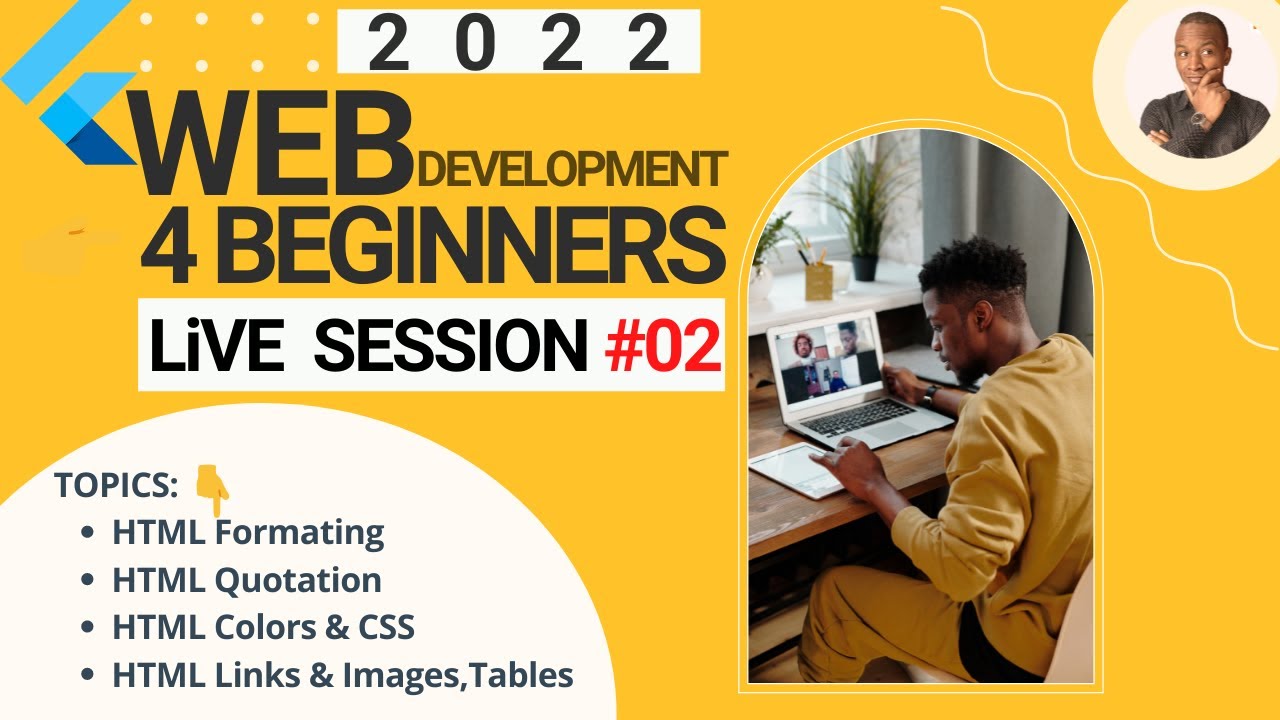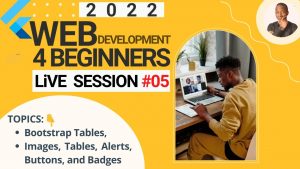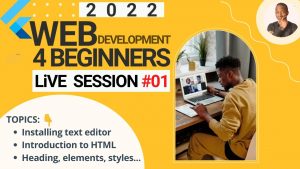1. Introduction to HTML
- What is HTML?
- HTML (HyperText Markup Language) is the standard language for creating web pages and web applications.
- It describes the structure of a webpage using a series of elements and tags.
- Basic Structure of an HTML Document
<!DOCTYPE html>
<html>
<head>
<title>Page Title</title>
</head>
<body>
<h1>This is a Heading</h1>
<p>This is a paragraph.</p>
</body>
</html>
2. HTML Elements and Attributes
- Elements
- Elements are the building blocks of HTML pages.
- They consist of a start tag, content, and an end tag.
- Example:
<h1>This is a heading</h1>
- Attributes
- Attributes provide additional information about elements.
- They are always included in the opening tag.
- Example:
<a href="https://www.example.com">This is a link</a>
3. Common HTML Tags
- Headings
<h1>,<h2>,<h3>,<h4>,<h5>,<h6>
Example:
<h1>Heading 1</h1>
<h2>Heading 2</h2>
Paragraphs
<p>- Example:
<p>This is a paragraph.</p>
Links
<a>- Example:
<a href="https://www.example.com">This is a link</a>
Images
<img>- Example:
<img src="image.jpg" alt="Description of the image">
Lists
- Unordered Lists:
<ul>and<li>
<ul>
<li>Item 1</li>
<li>Item 2</li>
</ul>
Ordered Lists: <ol> and <li>
<ol>
<li>First item</li>
<li>Second item</li>
</ol>
4. HTML Forms
- Form Element
<form action="/submit" method="post">
<label for="name">Name:</label>
<input type="text" id="name" name="name"><br><br>
<input type="submit" value="Submit">
</form>
Common Form Elements
- Text Input:
<input type="text"> - Password Input:
<input type="password"> - Radio Buttons:
<input type="radio"> - Checkboxes:
<input type="checkbox"> - Submit Button:
<input type="submit">
5. HTML Tables
- Table Element
<table>
<tr>
<th>Header 1</th>
<th>Header 2</th>
</tr>
<tr>
<td>Data 1</td>
<td>Data 2</td>
</tr>
</table>
Table Tags
<table>: Defines the table.<tr>: Defines a row.<th>: Defines a header cell.<td>: Defines a data cell.
6. HTML Semantic Elements
- Definition and Purpose
- Semantic elements provide meaning to the HTML structure.
- They help with accessibility and SEO.
- Common Semantic Elements
<header>: Defines a header for a document or section.<nav>: Defines navigation links.<section>: Defines a section in a document.<article>: Defines an independent, self-contained content.<footer>: Defines a footer for a document or section.
7. HTML5 New Features
- New Form Elements
- Examples:
<input type="email">,<input type="url">,<input type="date">
- Examples:
<form>
<label for="email">Email:</label>
<input type="email" id="email" name="email"><br><br>
<label for="birthday">Birthday:</label>
<input type="date" id="birthday" name="birthday"><br><br>
<input type="submit" value="Submit">
</form>
Multimedia Elements
- Audio
<audio controls>
<source src="audio.mp3" type="audio/mpeg">
Your browser does not support the audio element.
</audio>
Video
<video width="320" height="240" controls>
<source src="movie.mp4" type="video/mp4">
Your browser does not support the video tag.
</video>
Practice Exercise
- Create a simple web page using the elements covered in this session.
- Include headings, paragraphs, links, images, lists, a form, and a table.
- Use semantic elements to structure your page.
Summary
- HTML is the backbone of web development, providing the structure and content of web pages.
- Understanding and utilizing various HTML elements and attributes allows you to create well-structured, accessible, and interactive web pages.
- Practice using different HTML elements to become proficient in web development.
Next Session Preview
- Session #3: Introduction to CSS
- Understanding Cascading Style Sheets (CSS)
- Applying styles to HTML elements
- Layout and design principles
Feel free to ask any questions or request further clarification on any of the topics covered in this session!





